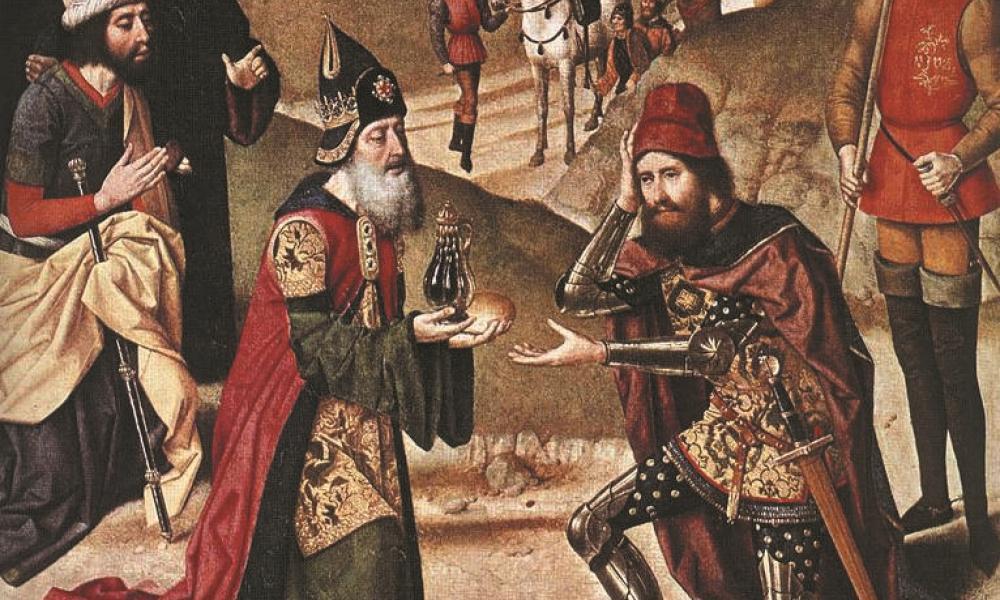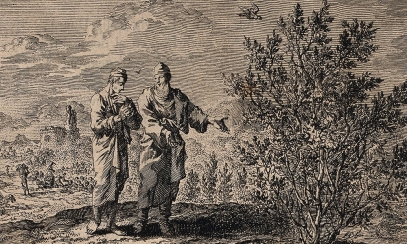
Sacraments Part 5: Holy Orders
What We Do is What We Believe
What We Do is What We Believe
1 Sacrament – 3 Degrees
By baptism, all the faithful are called to share in the threefold mission of Christ as priest, prophet, and servant of the kingdom. But while we all have a share in this mission, some are called to the sacrament of Holy Orders. “This sacrament configures the recipient to Christ by a special grace of the Holy Spirit, so that he may serve as Christ’s instrument for His Church” (CCC 1581). The ministerial priesthood is at the service of the common priesthood of believers (CCC 1547). It is a means by which Christ unceasingly builds up and leads his Church.
What does ‘Order’ mean?
In ancient Rome, the word order designated an established civil or governing body. Ordinatio meant incorporation into an ordo. In the Church, there are still established bodies or ordines (plural) – bishops, priests, deacons, religious, catechumens, widows, etc. Today, the word ordination is reserved for the sacramental act which incorporates a man into Holy Orders.
In the person of Christ and in the name of the Church
A priest or bishop serves “in persona Christi” (in the person of Christ) and “in nomine ecclesia” (in the name of the Church). The latter does not mean that he is a mere delegate of the community. The prayer and offering of the Church are inseparable from the prayer and offering of Christ – we offer our prayers “through him, with him, in him.”
The Rite of Ordination
The rites vary slightly, but the essential ‘matter and form’ for each is the same - the laying on of hands and the prayer of consecration. Like Baptism and Confirmation, the sacrament of Holy Orders confers an indelible spiritual character – it cannot be repeated nor be conferred temporarily.
Remembering that we all share in the priesthood of Christ, pray daily for our ordained ministers. For through them and the sacraments they confer, God continues to save His people.
3 Degrees of Holy Orders
1 Bishop In unbroken succession from the apostles, a bishop exercises a ministry of preaching and teaching, sanctifying, governing (CCC 1558). As Christ’s vicar, each bishop has the pastoral care of a particular Church entrusted to him, but he also serves with all bishops in the Episcopal College of which the Pope is head. The ‘fullness of the sacrament’ of Holy Orders resides in the episcopacy.
2 Priest A minister of God’s word, a minister of the sacraments, and a pastoral guide of the community. He exercises his role in communion with the bishop and in union with the presbyterate of the diocese.
3 Deacon is a minister of the liturgy, of the word, and of charity (diakonia). He serves in conjunction with the bishop and priests. 2 types of deacons: 1 Transitional deacon will serve until he is ordained a priest 2 Permanent Deacon is a married or unmarried man, who will remain a deacon. They may baptize, witness a marriage, preach and assist at liturgies, and preside at funerals. See more on page 21
Timeline: history of the sacrament of holy orders and priestly celibacy
Old Testament
Old Covenant priests had duties within the community pertaining to cult and culture. Of note are Melchizedek, (‘priest of God most High’) king of Salem who brought out bread and wine for Abram (Genesis 14); the priesthood of Aaron and the Levites (Leviticus 8, 21), and the institution of the 70 elders (Numbers 11).
New Testament
Jesus establishes the Church and remains its great High Priest (Letter to Hebrews).
He calls disciples to follow Him including Peter, the ‘rock’ on whom He would build His Church.
After Christ’s death, there is collective leadership and no institutional priesthood.
Seven Hellenist leaders were chosen by people to do charitable work
(diakonia); Apostles pray and lay hands on them (Acts 6).
James and elders (presbyteroi) preach in Jerusalem.
Timothy and Titus establish local leaders, presbyters, and overseers (episkopoi).
Major decisions are made by a Council under the influence of the Holy Spirit (Acts 15).
Early Church
96 Clement of Rome
writes of succession of ministers from the apostles; two-tier orders of presbyter-bishop and deacon.
100 Ignatius of Antioch
promotes a three-fold ministry of overseer (bishop), presbyter (priest), and deacon.
Bishop is chief teacher of his church; no baptism or Eucharist celebrated without reference to bishop (a ‘monarchial episcopate’).
215 Apostolic Tradition
Notes the role of the community in selecting leaders and contains an ordination rite with the laying on of hands and prayers for gifts of the Spirit. Some of these prayers are still used.
250 Didascalia Apostolorum
recorded that woman deacons (ministrae) were necessary when a woman was to be baptized (#17).
325 Council of Nicea declared women are not to be counted among the clergy
404 Pope Innocent I said priests and deacons should be celibate.
3-7th centuries
Increased importance of presbyters – less advisory to bishop, assume role of priest as leader of sacrifice and prayer, assume liturgical duties of the bishop in the local community.
Role of deacons was reduced. Order seen as transition to priesthood.
Bishops become more involved with administrative and judicial responsibilities.
8-15th centuries
Emphasis on power of priest to consecrate Body and Blood of Christ and administer other sacraments.
Holy Orders recognized as one of seven sacraments.
Seven orders develop: porter, exorcist, lector, acolyte, subdeacon, deacon, priest.
Understanding of clerical hierarchy (bishop, priest, deacon) and lay hierarchy (religious, lay, catechumens) which reflects divinely-ordered structure of universe (hierarchy from hieros = priest).
Ordination rites more formally developed with the Gregorian Sacramentary.
Some clergy held other jobs; education of clergy improves.
Lateran Council II (1139) declares holy orders is an impediment to marriage
16-20th centuries
Council of Trent (1548-1563)
1 Defended the existence of priesthood with the power to consecrate the Body and Blood of Christ and forgive sins in Christ’s name.
2 Confirmed Holy Orders as one of the seven sacraments.
3 Required celibacy.
4 Confined bishops to their own territories.
5 Mandated that priests be educated in seminaries.
6 Defended hierarchical orders; bishops are superior to priests.
7 Upheld the distinction between ordained and other baptized.
8 Gave directives on preaching and pastoral care.
1947 Pius XII declares ‘laying on of hands’ to be definitive element in ordination.
Vatican II (1961-1965)
The Dogmatic Constitution on the Church (1964), the Decree on the Ministry and Life of Priests (1965), and the Decree on the Pastoral Office of Bishops in the Church (1965) relate ordained ministry to Christ and to the priesthood of all the faithful. They define more clearly the role of bishop, priest, and deacon.
1967 Sacram Diaconatus Ordinem established canonical norms for the permanent diaconate
1968 Revised Rites of Ordination established.
The matter and form of the Sacrament of Holy Orders: Matter: laying on of hands. Form: consecratory prayer
1972 Paul VI writes an Apostolic Letter laying down norms about deacons.
Allows lay people to be readers and acolytes – distributors of holy Communion at Mass.



